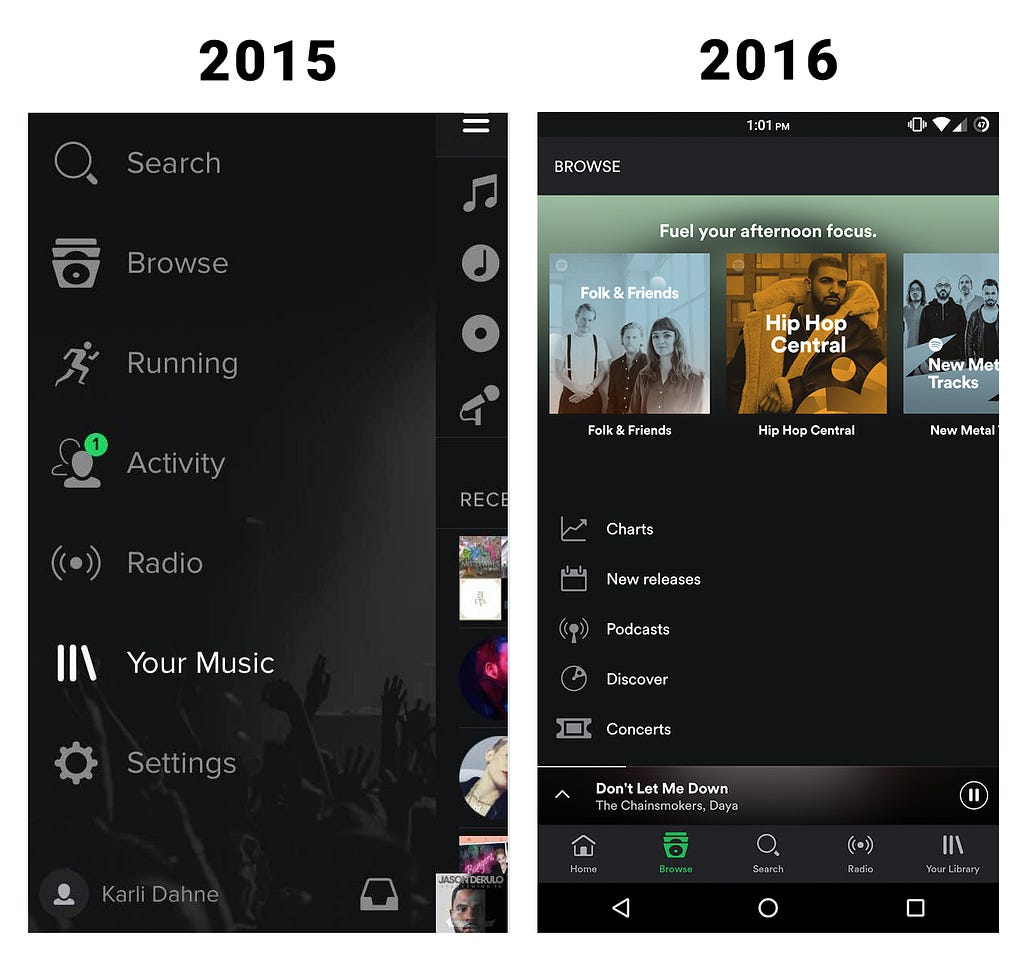2016 was all about minimalism and anticipatory design. So what UX Design Trends can we expect from 2017? Here are the top 5 trends we think will dominate this year.
5. ChatBots
How many times have you found yourself clicking around an entire site to find something simple? Enter ChatBots! The 2017 way to interacting with your users.
According to a study conducted by Juniper “merchant integration of technologies such as bots and natural language interfaces will lead to remote goods purchases by mobile totalling $2.1 trillion by 2021”.

This relatively new addition to the online space helps guide the user anytime they feel lost. By mimicking human interaction, bots can easily take the hassle out of sign up forms, bookings and simplify search/filter bars. What’s more? They create a customized experience for each user and help them feel connected with the brand.
We anticipate ChatBots will become a standard addition to any complex website over the next couple of years.
4. Decline In Hamburger Menus On Mobile
TechCrunch has been criticizing the hamburger menu since 2014, and with good reason! Numerous studies have proven that the tiny icon is inefficient, not glanceable and easily overlooked.
Despite these studies, major companies continue to use them. Spotify was one of the first to ditch the menu with its redesign in May, seeing a 30% increase in clicks on menu items. Apple Music’s big launch in July reinforced the idea with a similar design.

The new bottom bar design allows users instant access to all the essential menus without the need to tap into the hamburger menu, speeding up overall navigation.
We expect to see a huge uptake of bottom bar tabs to replace the dated trend. Bye bye hamburger menus, we won’t miss you!
3. Large Font Sizes For Copy
Mobile browsing overtook desktop in late 2015 according to SimilarWeb’s Study, but many websites are yet to adapt. Readability is still one of the biggest usability issues plaguing the web. Small font sizes, overcrowded menus and desktop-first design practices are leaving the user pinching and zooming, just to read the content.

In 2016, we’ve seen an increase of big, bold type for headlines on landing pages, but we predict the trend will extend to body copy. Unnecessary text will be replaced by icons, images and tabbed menus. Forward thinking companies are realizing that less is more and making readability a priority.
2. Less Menu Options
Anyone who’s been to a restaurant with a 10 page menu has experienced the paradox of choice. This well documented, but largely ignored concept is finally gaining traction in the online sphere. The biggest challenge is posed to e-commerce websites and online stores who have many categories to display.

Older designs still feature all the categories in the top navigation, as logic dictates, they are easier to find. Hiding menus is a bad idea, but so is overwhelming the user with choice. Clever vendors like Amazon have found a solution to this, favouring search and compressing all categories in one mega menu.
We expect to see a huge reduction in menu options this year, with many creative alternatives to come.
1. AR/VR
The recent advancement in AR/VR technology promises to completely reshape the way we interact in the digital space. Instead of scrolling — we can touch/feel, instead of reading — we can experience.
Niantic’s AR game Pokemon Go was the first large scale introduction for those who don’t work in the tech industry. Since it’s release in July 2016, it has received more than 100 million downloads worldwide, earning $10 million dollars in daily revenue.

The movement is still in it’s humble beginnings with VR ready computers, games and headsets slowing hitting the mainstream market. Facebook surprised the world with a demo of Oculus Connect, in October last year. A sure sign of many more surprises to come!
It’s difficult to predict all the uses this new technology will bring, but it’s safe to say it’s a giant leap in the right direction.
